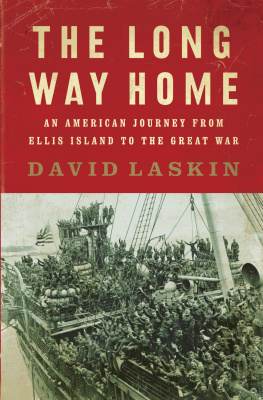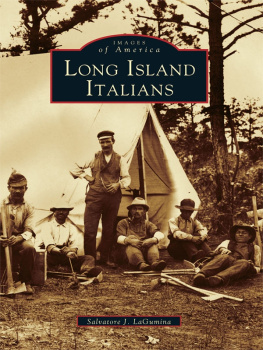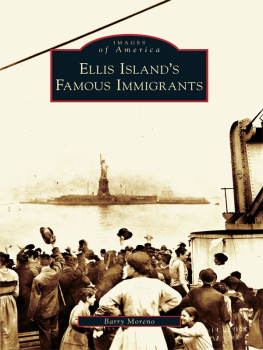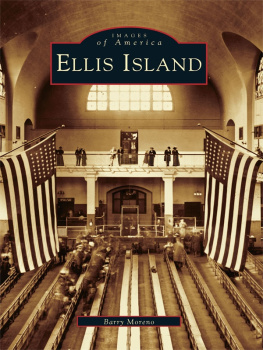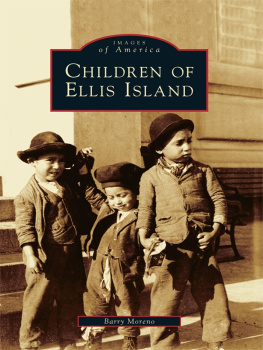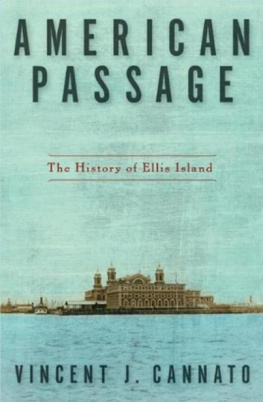FOR MY MOTHER,
daughter of immigrants,
niece of a World War I veteran
At its core, perhaps, war is just another name
for death, and yet any soldier will tell you,
if he tells the truth, that proximity to death
brings with it a corresponding proximity to life.
TIM OBRIEN , The Things They Carried
Oh the army, the army, the democratic army,
All the Jews and Wops, the Dutch and Irish cops
Theyre all in the army now.
CORPORAL JOHN MULLIN, LYRICS TO
MARCHING SONG SUNG BY THE
77TH MELTING POT DIVISION
Contents
This is the story of twelve immigrants from Europe who served in the American armed forces during World War I. Of the humblest origins, these men and their families came to this country at the turn of the last century in search of freedom and opportunity. When the nation went to war in 1917, the twelve returned to Europe in uniform and fought in the front lines. The survivors came back different men, transformed in the ways people are transformed by sorrow and sacrifice beyond words. Transformed in the way all of us are transformed when history catches us in its rough current.
EPIFANIO AFFATATO
Born Scala Coeli, Italy, January 3, 1895; emigrated with his brother 1911; joined his father and worked as a laborer in Brooklyn, New York, and briefly on railroads in Des Moines, Iowa; entered the army April 1, 1918; served as private first class with Company C, 107th Infantry, 27th Division.
JOSEPH CHMIELEWSKI
Born Russian Partition of Poland, 1896; emigrated 1912; joined his brother and worked as a coal miner in South Fork, Pennsylvania; entered the army June 17, 1917; served as private with Company A, 16th Machine Gun Battalion, 6th Division.
ANDREW CHRISTOFFERSON
Born Haugesund, Norway, April 14, 1890; emigrated with his sister-in-law and her children 1911; worked as a farm laborer in Larimore, North Dakota, and homesteaded in Chinook, Montana; entered the army June 25, 1918; served as private first class with Company M, 321st Infantry, 81st Wildcat Division.
MAXIMILIAN CIEMINSKI
Born Polonia, Wisconsin, October 11, 1891 to immigrants from Kaszubia, Prussian Partition of Poland; worked as a miner and night watchman in his brother-in-laws brewery in Bessemer, Michigan; entered the army November 19, 1917; served as private with Company C, 102nd Infantry, 26th Yankee Division.
SAMUEL DREBEN
Born Poltava, Ukraine, June 1, 1878; emigrated 1899; enlisted U.S. Infantry 1899 and fought in the Philippines, where he was dubbed the Fighting Jew; fought as soldier of fortune in Central America; enlisted February 12, 1918; served as sergeant with Company A, 141st Infantry, 36th Division.
MEYER EPSTEIN
Born Uzda, Russian Pale of Settlement, 1892; emigrated on the Lusitania 1913; worked as a hauler and plumber, New York City; entered the army April 27, 1918; served as private with Company H, 58th Infantry, 4th Ivy Division.
SAMUEL GOLDBERG
Born Lodz, Russian Pale of Settlement, March 19, 1900; emigrated with his mother and siblings 1907; lived in Newark, New Jersey, and later worked in an automobile dealership in Atlanta, Georgia; entered the U.S. Cavalry May 6, 1918; served as private with Company M Troop, 12th Cavalry Regiment.
MATEJ KOCAK
Born Gbely, Slovak section of Austria-Hungary, December 30, 1882; emigrated 1907; enlisted U.S. Marine Corps, October 15, 1907, and reenlisted twice; served in World War I as sergeant with 66th (C) Company, 5th Marine Regiment, 2nd Division.
TOMMASO OTTAVIANO
Born Ciorlano, Italy, May 1896; emigrated with his mother and siblings 1913; worked as a machine operator in Lymansville, Rhode Island; entered army April 27, 1918; served as private with Company I, 310th Infantry, 78th Division.
ANTONIO PIERRO
Born Forenza, Italy, February 15, 1896; emigrated with a cousin 1913; worked as a laborer in Swampscott, Massachusetts; entered the army October 4, 1917; served as private with Battery E, 320th Field Artillery, 82nd All-American Division.
PETER THOMPSON
Born County Antrim, Ireland, September 4, 1895; emigrated 1914; worked in the copper mines in Butte, Montana; entered the army in summer 1917; served as private first class (later promoted to sergeant) with Company E, 362nd Infantry, 91st Wild West Division.
MICHAEL VALENTE
Born SantApollinare, Italy, February 5, 1895; emigrated 1913; worked as an orderly in a mental hospital, Ogdensburg, New York; enlisted in New York National Guard, 1916; served as private with Company D, 107th Infantry, 27th Division.
A ntonio Pierroa dapper, dark-eyed young private in the field artilleryspent the morning of October 17, 1918, feeding shells packed with phosgene gas to the big guns in the Argonne forest in France. Tonys unitthe 82nd All-American Divisions 320th Field Artilleryopened fire on the tiny village of Champigneulle at 6:10 A.M. , and they kept it up until they had laid down twenty-six hundred rounds of phosgene. When that cloud of poison proved ineffective against the German occupiers, the All-Americans fired off an additional twelve hundred phosgene rounds just before noon. The second barrage did the trickor seemed to. The Germans left Champigneulle and streamed into the nearby scrap of woods, the Bois des Loges, where they proceeded to slaughter the faltering, inexperienced American infantry.
Before the battle, Tony had transported artillery shells to the front with a horse and cart. Now the cart was piled with the bodies of men who died that day tryingand failingto seize that bit of woods. Hundreds of American soldiers would perish in the Bois des Loges in the final weeks of October 1918, but Tony was one of the lucky ones. I know to the last decimal just how lucky because eighty-eight years later I sat down with him in the sunny back garden of his house in the seaside town of Swampscott, Massachusetts, and prodded him to ruminate on his life and times. It was July 8, 2006, and Tony Pierro was halfway through his 111th year. One hundred and ten years old . To me it seemed inconceivable to be face-to-face with someone who had gone to war when Woodrow Wilson was the commander in chief.
But service and survival were not the only extraordinary things about Tony Pierro. The very fact that he was living out his days in this lovely, prosperous, quintessentially American setting was in itself a remarkable feat, the final chapter in a humble epic that had begun in an impoverished hill town in the south of Italy. For Tony was not only a soldier but an immigrant. Though he fought in France with the All-Americans, at the time of his service he was not technically an American at all. Born in the far south region of Basilicata in 1896, Tony had emigrated to Massachusetts in 1913 at the age of seventeen. Like millions of other immigrants in the first decades of the twentieth century, he passed through Ellis Island, moved in with relatives who had come before him, and went to work at the first job he could find. Four years later, when the army mailed him a letter ordering him to report for duty, Tony went to war. Even though he was still a citizen of Italy, Tony fought for the United States. Some half a million other immigrants from forty-six different nations did the same. At the height of the nations involvement in the worldwide conflict that became known as the Great War, fully 18 percentnearly one in fiveof the 4.7 million Americans in uniform had been born overseas.
Tony Pierro didnt say much about how fighting with the All-American Division had changed his life or his relationship with his adopted country. He didnt have to: the facts spoke for themselves. Nearly nine decades later he still had his discharge papers; he was still proud that he had chosen to serve with the American Expeditionary Forces instead of returning to Italy (our ally in that war) to serve in the Italian army; he still remembered his joyous disbelief when the Armistice was declared on November 11, 1918; he still loved his country, by which he meant the country in whose military he had served.

